
George Frederick "Buzz" Beurling, was the most successful Canadian fighter pilot and flying ace of the Second World War.
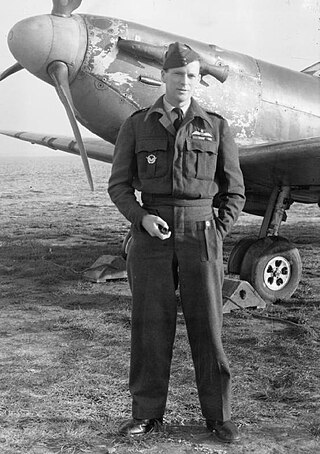
John Milne Checketts, was a New Zealand flying ace of the Second World War, who was credited with the destruction of 14+1⁄2 enemy aircraft, three probably destroyed and 11 damaged.

Group Captain Colin Falkland Gray, was a Royal Air Force (RAF) officer and the top New Zealand fighter ace of the Second World War. He was credited with at least 27 aerial victories.

Raymond Brown Hesselyn, was a New Zealand fighter pilot and flying ace of the Second World War, credited with the destruction of at least 18 enemy aircraft while flying with the Royal Air Force (RAF) over Europe and the Mediterranean.

Evan Dall "Rosie" Mackie, was a New Zealand fighter pilot and flying ace of the Second World War. Credited with 21.5 aerial victories, he was the highest scoring flying ace to serve with the Royal New Zealand Air Force (RNZAF).

Reginald Joseph Cowan Grant, was a New Zealand flying ace of the Royal New Zealand Air Force (RNZAF) in the Second World War.

No. 485 (NZ) Squadron was a fighter squadron established for service during the Second World War. It was the first New Zealand squadron formed under Article XV of the Empire Air Training Plan. Although many of its flying personnel were largely drawn from the Royal New Zealand Air Force, the squadron served in Europe under the operational and administrative command of the Royal Air Force.

Alan McGregor Peart, was a New Zealand fighter pilot and flying ace of the Second World War. He served in Europe with No. 610 Squadron, and with No. 81 Squadron in North Africa, Malta, Sicily, Italy and the Far East. He is credited with the destruction of six enemy aircraft, plus a share in another aircraft destroyed. He is also notable for having shot down aircraft from all three main Axis powers—Germany, Italy and Japan.

John Donald Rae, was a flying ace of the Royal New Zealand Air Force (RNZAF) during the Second World War. He was officially credited with the destruction of twelve enemy aircraft, as well as eight probably destroyed and six damaged.

Group Captain Edward Preston Wells was a New Zealand flying ace of the Royal New Zealand Air Force (RNZAF) during the Second World War. He was credited with the destruction of twelve enemy aircraft.

Gray Stenborg was a New Zealand flying ace of the Royal New Zealand Air Force (RNZAF) during the Second World War. He was credited with 14 confirmed victories, one shared destroyed, and three damaged.
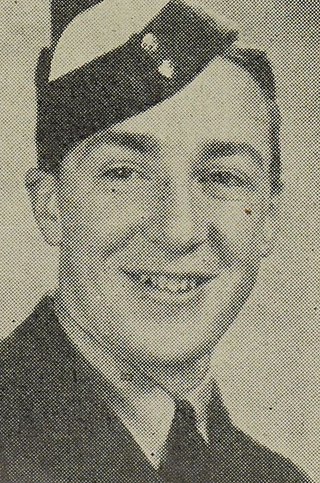
Nigel Manfred Park, DFM was a New Zealand fighter pilot and flying ace of the Second World War. He was credited with having shot down at least ten aircraft.

Paul Wattling Rabone was a New Zealand fighter pilot and flying ace who flew in the Royal Air Force (RAF) during the Second World War. Born in Salisbury, England, he was educated in New Zealand. He joined the RAF in 1938 and was posted to No. 88 Squadron, which was sent to France in September 1939 after the outbreak of the Second World War. He flew a Fairey Battle during the Battle of France, and was twice shot down.
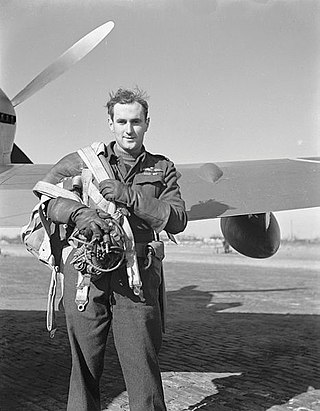
Warren Schrader was a New Zealand flying ace of the Royal New Zealand Air Force (RNZAF) during the Second World War. He was credited with the destruction of eleven enemy aircraft.

John Arthur Houlton was a New Zealand flying ace of the Royal New Zealand Air Force (RNZAF) during the Second World War. He was credited with the destruction of at least five German aircraft.

Mervyn Robert Bruce Ingram, was a New Zealand flying ace of the Royal New Zealand Air Force (RNZAF) during the Second World War. He is credited with at least eight aerial victories.
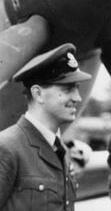
John Ellis was a British flying ace of the Royal Air Force (RAF) during the Second World War. He was credited with at least 13 aerial victories.
George Urquhart Hill, was a flying ace who served in the Royal Canadian Air Force (RCAF) during the Second World War. He was credited with having shot down at least eighteen aircraft.
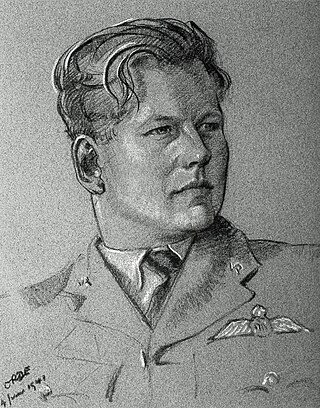
John Bisdee, was a British flying ace who served in the Royal Air Force (RAF) during the Second World War. He was credited with having shot down at least ten aircraft.
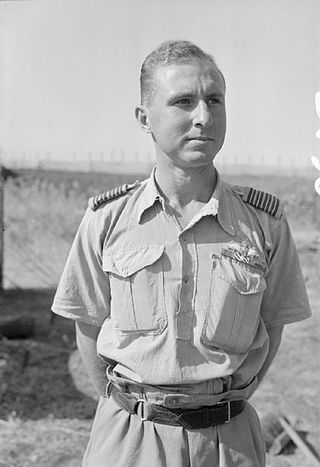
George Gilroy, was a British flying ace who served in the Royal Air Force (RAF) during the Second World War. He was credited with having shot down at least twenty-four aircraft.




















